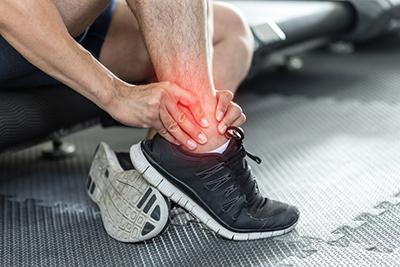Ankle pain affects millions of people, often forcing them to abandon physical activities they enjoy. This discomfort can stem from various causes, including sprains, strains, arthritis, or overuse injuries. While complete rest might seem like the obvious solution, prolonged inactivity can lead to muscle weakness and joint stiffness, potentially worsening the problem.
Exploring Low-Impact Exercises
Swimming provides an excellent option for people dealing with ankle pain. The buoyancy of water reduces weight-bearing stress on joints while allowing for full-body movement. Water walking, swimming laps, and aqua aerobics classes offer cardiovascular benefits without placing excessive strain on injured or painful ankles.
Upper body strength training allows you to maintain fitness levels while your ankle recovers. Seated exercises using resistance bands, dumbbells, or cable machines target your arms, shoulders, chest, and back muscles. Chair-based workouts can provide substantial physical benefits without requiring ankle mobility or weight-bearing movement.
Cycling on a stationary bike offers another ankle-friendly alternative. The circular pedaling motion typically places less stress on ankle joints compared to high-impact activities like running or jumping. Adjust the seat height and pedal tension to find a comfortable position that doesn’t exacerbate your pain.
Understanding Protective Measures
Proper footwear plays a significant role in ankle pain management. Shoes with adequate arch support, cushioned soles, and stable heel counters help distribute weight evenly and reduce stress on ankle joints. Athletic shoes designed for your specific activity type provide better support than general-purpose footwear.
Ankle braces and supports can provide additional stability during physical activities. These devices range from simple elastic sleeves that offer compression to more structured braces with rigid components. The appropriate type depends on your specific condition and activity level.
Modifying your exercise routine can help prevent further ankle aggravation. Shorter workout sessions, gentler movements, and avoiding uneven surfaces reduce the risk of re-injury. Gradually increasing activity intensity allows your ankle to adapt without overwhelming damaged tissues.
Identifying Pain Management Techniques
Ice application after physical activity can help reduce inflammation and pain. Apply ice packs wrapped in a thin towel for 15-20 minutes at a time, several times throughout the day. This technique works best immediately following exercise or when pain levels increase.
Gentle stretching and mobility exercises can maintain ankle flexibility without causing additional harm. Ankle circles, calf stretches, and towel stretches performed within comfortable ranges of motion help prevent stiffness. Stop any movement that causes sharp or increasing pain.
Elevation and rest periods between activities allow tissues to recover and reduce swelling. Raising your ankle above heart level while resting promotes fluid drainage and can decrease pain levels. Balance active periods with adequate rest to support the healing process.
Get Help With Ankle Pain
Managing ankle pain while staying active requires a balanced approach that prioritizes both movement and recovery. Low-impact exercises like swimming and cycling allow you to maintain cardiovascular fitness without aggravating your condition. Protective equipment and proper footwear provide additional support during activities. A healthcare provider can assess your specific situation and recommend appropriate treatment options. With the right strategies, you can maintain an active lifestyle while allowing your ankle to heal properly.









Leave a Reply